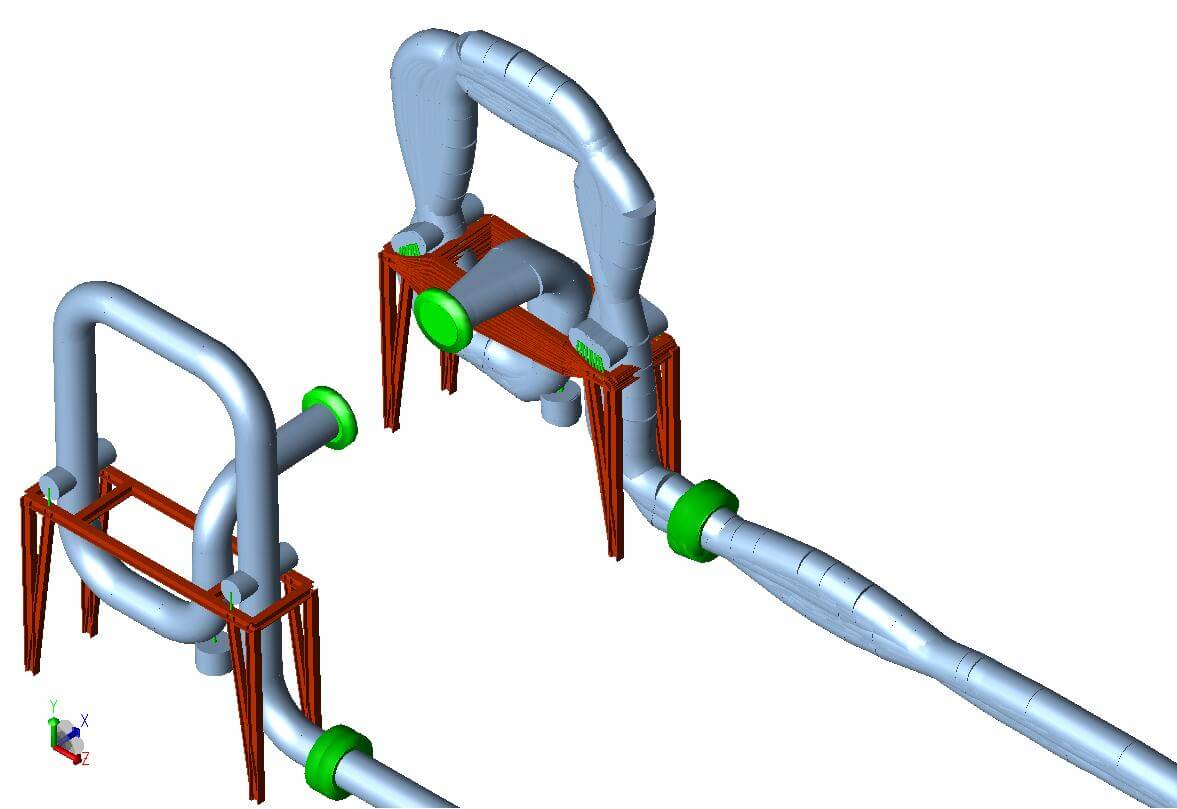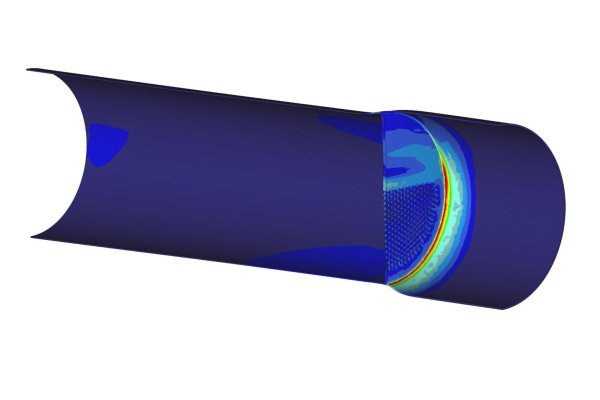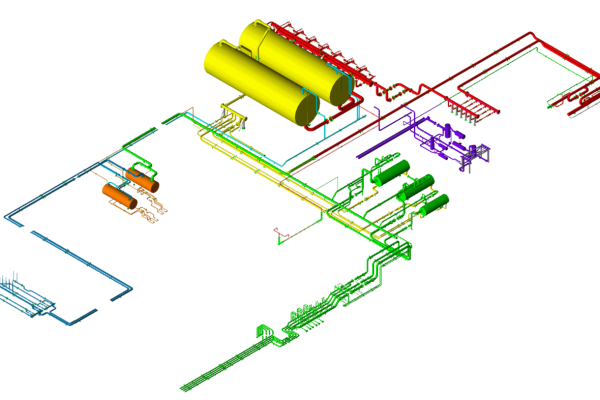Introduction
In this case study, we explored the pulsation and vibration phenomena at a gas compression station equipped with four centrifugal compressors. These compressors generate flow pulsations due to the action of the impellors, which can excite the system’s acoustic and mechanical natural frequencies. To understand and evaluate the system’s sensitivity to these effects, a detailed pulsation and mechanical vibration analysis was conducted.
Analysis
Centrifugal compressors primarily create periodic low-amplitude pressure and flow oscillations at the blade passing frequency. To simulate and analyze these compressor-induced disturbances, we utilized BOSfluids, a software package designed for one-dimensional fluid transient analysis. The disturbances were modeled as harmonically varying pressure boundary conditions. Pulsations were simulated across all blade passing frequencies within the operational range of the compressors.
Additionally, the mechanical vibrations of the compressors can induce structural vibrations in the ‘elephant-ear’ components, which are directly connected to the compressor nozzles. To address this, a mechanical vibration analysis was performed using CAESAR II. This software helped calculate the system’s natural structural frequencies.
Results
The pulsation simulations revealed several transient pressure peaks indicative of standing waves resulting from acoustic resonance. Given the complexity and the wide frequency range of the system, completely avoiding acoustic resonance is challenging. These transient pressure oscillations have the potential to induce structural ‘breathing’ modes in the piping, leading to acoustic fatigue. However, an assessment against Eisinger’s design limit for acoustic fatigue indicated that no significant acoustically induced fatigue is expected.
A key observation was that it is practically impossible to avoid natural frequency modes within the compressor’s operating range due to the density of natural frequencies. The CAESAR II model demonstrated that the ‘elephant-ear’ components exhibit higher-order flexural natural frequency modes within the compressor’s operating speed range. Despite this, the analysis showed that the maximum dynamic stress experienced by the ‘elephant-ears’ remains well below the endurance limit as specified by the ASME Boiler and Pressure Vessel (B&PV) Division 2 code. This indicates that the structure is unlikely to suffer from fatigue failure under normal operating conditions.
In summary, while natural frequency modes within the operating range of the compressor cannot be completely avoided, the overall system remains robust and well within safe operational limits as defined by industry standards.







